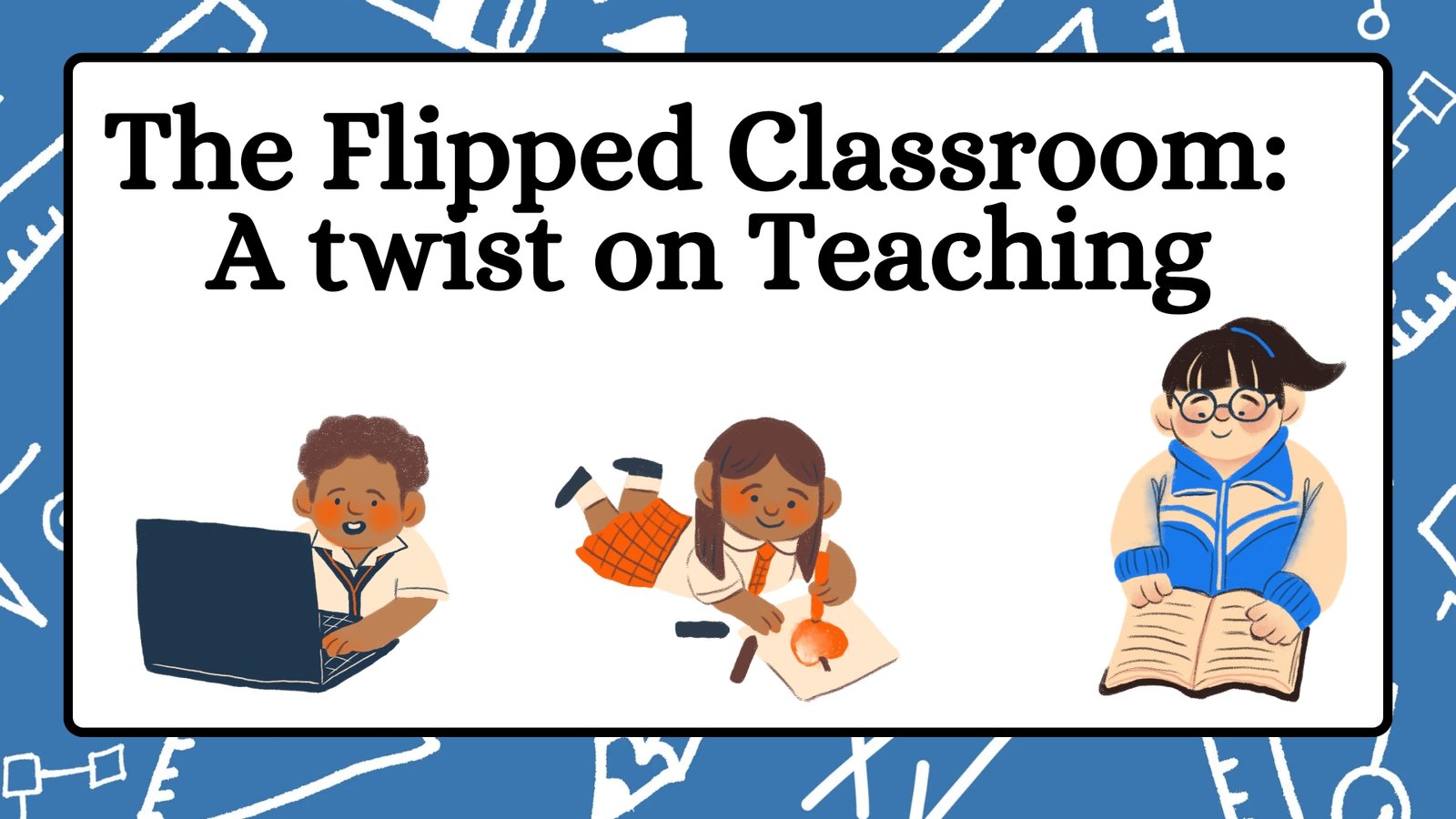

The Flipped Classroom: A Twist On Teaching
In the modern world, education is constantly evolving. One of the most revolutionary concepts gaining traction is the flipped classroom. This approach turns traditional teaching methods on its head. It makes homework more interactive and engaging, allowing students to actively participate in their learning journey.
Let’s explore what a flipped classroom is, how it works, and why it’s such an effective tool for teachers who are aiming to create a more dynamic and interactive learning environment.
What Is a Flipped Classroom?
A flipped classroom is a teaching method that swaps traditional teaching roles. In a traditional classroom, teachers deliver lessons in class, and students complete homework afterward. The flipped classroom flips this model. Students learn the new material at home, usually through pre-recorded video lectures, articles, or interactive modules. Then, in class, they engage in activities that reinforce their understanding of the material.
So, instead of simply watching a lecture, students are actively applying what they’ve learned. Class time is spent discussing the material, solving problems, or working on projects with their peers. This shift allows for more collaborative and hands-on learning experiences.
How Does the Flipped Classroom Work?
The flipped classroom works by assigning learning tasks for students to complete at home, before the traditional class begins. These tasks often involve watching video lectures, reading articles, or completing online quizzes. The key here is that students engage with the content outside the classroom, in a way that is flexible and self-paced.
Once students have absorbed the material, they come to class ready to engage with the lesson in a more meaningful way. This is where the magic happens. Instead of sitting through a lecture, students can participate in collaborative activities, hands-on experiments, or problem-solving tasks. Teachers are no longer the main source of information in class; instead, they act as guides, offering support and feedback as students work through exercises and group discussions.
Special Offer for All Teachers Click Here.
Making Homework More Interactive
The flipped classroom significantly changes how homework is approached. Traditionally, homework is a solitary activity where students struggle to understand concepts on their own. However, by making homework more interactive, students are not isolated in their learning. Instead, they become active participants in their educational journey.
Here’s how you can make homework more interactive:
- Use Technology: Video lessons, quizzes, and interactive assignments allow students to engage with the content in a more meaningful way. Tools like Google Classroom, Kahoot, and Edpuzzle allow teachers to create interactive and engaging assignments that students can access from anywhere.
- Encourage Collaboration: Encourage students to work together on homework tasks. By using online forums, chat groups, or collaborative platforms like Padlet or Microsoft Teams, students can share ideas, ask questions, and help each other solve problems. This promotes teamwork and a deeper understanding of the material.
- Create Real-World Scenarios: Make homework tasks relevant to real-world situations. By giving students tasks that mimic real-life problems, such as designing a budget, creating a presentation, or researching current events, you allow them to see the practical applications of their learning.
- Provide Instant Feedback: Instead of waiting until the next class to provide feedback, use tools that offer immediate responses to homework tasks. Online quizzes or assignments that give instant feedback allow students to learn from their mistakes in real-time and correct misconceptions before they become bigger issues.
- Personalize Learning: The flipped classroom encourages teachers to tailor homework assignments to meet the needs of individual students. Adaptive learning platforms like Khan Academy or Edmodo provide students with content that is suited to their skill level, ensuring that each student is challenged without feeling overwhelmed.
Benefits of the Flipped Classroom
The flipped classroom method offers numerous benefits, particularly when it comes to making homework more interactive and engaging. Let’s take a look at some of these advantages.
1. Improved Student Engagement
When students are given the opportunity to learn at their own pace, they are more likely to engage with the content. The flipped classroom encourages active participation, which means that students are not just passive recipients of information but active learners who take responsibility for their education.
2. More Collaborative Learning
Class time is now focused on collaborative learning activities, which help students deepen their understanding of the subject. By working together on projects, solving problems as a team, or engaging in discussions, students learn from each other and develop valuable teamwork skills.
3. Better Use of Class Time
Teachers can use class time more effectively because they are not spending the majority of it delivering lectures. Instead, they can focus on providing personalized support, guiding students through complex concepts, and facilitating group work. This allows for a more dynamic and interactive classroom experience.
4. Increased Access to Resources
With technology at the center of the flipped classroom model, students have access to a wealth of learning materials. They can watch videos, complete interactive exercises, and even re-watch lessons if they need clarification. This ensures that learning can happen anytime and anywhere.
5. Supports Diverse Learning Styles
Every student learns differently. Some students may need more time with the material, while others prefer to work through problems hands-on. The flipped classroom supports a variety of learning styles by providing multiple ways for students to engage with the content, from videos and articles to collaborative activities and discussions.
Furthermore, You can click here to read “Differentiated Instruction: Meeting the Needs of All Learners”
How Teachers Can Implement the Flipped Classroom
Now that you understand the basics of the flipped classroom and its benefits, you might be wondering how to implement it in your own classroom. Here are some tips for getting started:
- Start Small: You don’t have to flip your entire classroom at once. Begin by flipping one or two lessons, then gradually increase the number of flipped lessons as you get more comfortable with the process.
- Create High-Quality Learning Content: The quality of your video lectures or materials is crucial. Ensure that the content is clear, concise, and engaging. Use visuals, animations, and examples to help explain difficult concepts.
- Incorporate Interactive Tools: Use tools like quizzes, polls, and discussion forums to make homework tasks more engaging. Platforms like Google Forms or Edpuzzle allow you to create interactive content that helps reinforce the lesson.
- Encourage Student Feedback: Get feedback from your students about their experience with the flipped classroom. Ask them what they liked, what they found challenging, and how the learning process can be improved.
- Foster a Growth Mindset: Be patient with yourself and your students. Transitioning to a flipped classroom can take time, but the benefits are worth it. Encourage students to embrace the change, knowing that they are gaining valuable skills and becoming more independent learners.
Conclusion: Let’s Wrap It Up
So, let’s sum things up. The flipped classroom is an innovative approach that makes homework more interactive and engaging. By shifting the learning process outside the classroom and using class time for active participation, collaboration, and problem-solving, you help students become more independent and engaged learners.
If you’re a teacher looking to transform your classroom, why not give the flipped classroom a try? With the right tools, resources, and mindset, you can create a more dynamic and interactive learning environment that will benefit both you and your students. So, are you ready to flip the script on your classroom? It’s time to turn homework into something exciting!
If you want to explore more tools to enhance your classroom, check out our website for educational resources, tech tools, and expert advice to help you make the most of the flipped classroom model.
Barkha Sachdeva is a B.Com(Hons) graduate from Delhi University. Passionate about crafting content, she enjoys writing about fashion, beauty, technology, and travel. With three years of content writing experience, she possesses valuable insights and ideas in these domains.







Post Comment